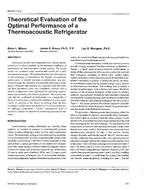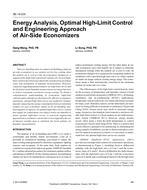We begin the report of the results for this case study with a description of a reference test. Initially we simulated the performance of this one-occupant office by considering the exterior wall to be entirely glazed. Mullions and other framing members were ignored. For the day studied, the temperatures at three of the internal building surfaces are plotted versus the ambient external dry-bulb temperature. The temperature at the glazed wall (south elevation) closely follows the external air temperature, whereas the values at the north wall and the suspended ceiling are similar to the fixed air temperature 22.2°C (72°F). These latter two temperatures can be seen to be lower than the room air temperature until 1 p.m. and noon, respectively. Each then exceeds the ambient air temperature for a period of four hours. The results of the UWENSOL calculations of systems load requirements indicate that the room would have a cooling load beginning at noon and continuing until 6 p.m. Previous to that period and following it heating would be required to maintain the 22.2°C (72°F) fixed air temperature. Presumably this cooling need would be satisfied by increasing the outside air component of the supply air by using an economizer cycle.
Product Details
- Published:
- 1980
- Number of Pages:
- 12
- File Size:
- 1 file , 1.2 MB
- Product Code(s):
- D-LA-80-02-2
- Note:
- This product is unavailable in Russia, Belarus


